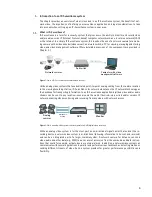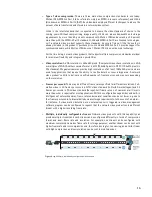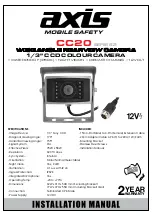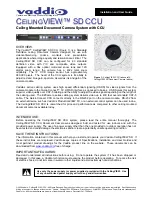
17
>
Alarm and event management
: With this capability, event triggers can be programmed based on
schedule, I/Os, video motion detection, audio detection, active tampering alarm or temperature,
among others. Pre- and post-alarm image buffers within a network camera can save and send
images collected before and after an alarm occurs. Once an alarm or event is detected, a network
camera can send notifications via e-mail, TCP, HTTP and upload images via e-mail, FTP and HTTP.
Note that image uploads consist of sending individual JPEG files and do not mean recordings of
video streams. Recording a video stream on an alarm trigger can be done using a video manage-
ment software program, which has the capability to request a stream based on specific criteria
(e.g., an H.264, MPEG-4 or Motion JPEG compression format, higher frame rate and image quality)
that may be different from normal recording settings.
>
Power over Ethernet (PoE) (IEEE 802.3af)
: When a network camera supports this feature, it
means that the camera can receive power through the same cable as for data. It reduces cabling
requirements and installation costs.
>
Wireless
: A network camera with built-in wireless support is a consideration when running a cable
between a LAN and a network camera is impractical, difficult or expensive. Wireless network
cameras are suitable for use in outdoor situations, in environments such as historic buildings where
the installation of cables would damage the interior, or in cases where there is a need to move
cameras to new locations on a regular basis, such as in a supermarket. Ensure that the wireless
network camera supports security protocols such as IEEE 802.1X and WPA/WPA2 (Wi-Fi Protected
Access), which will help secure the wireless communication.
>
Security and management
: At a basic level, a video surveillance network camera should provide
different levels of password-protected access to a network camera. For instance, some authorized
users may only have access to view images from specific cameras; others have operator-level access,
and a few have access to administer all settings in a network camera. Beyond multi-level password
protection, a network camera may offer HTTPS encryption for secure communication; IP address
filtering, which gives or denies access rights to defined IP addresses; IEEE 802.1X to control network
access; and user access log.
>
Network management features
: They include support for Quality of Service (QoS), which can
prioritize and reserve network capacity for mission-critical surveillance in a QoS aware network,
and support for Internet Protocol version 6 (IPv6) in addition to IPv4 addresses.
c) How to select a network camera:
To determine the type of network cameras required, as well as the number of cameras needed to
adequately cover an area, you first need to determine the scene or environment and the goal of the
surveillance application.
Consider:
1)
Environment
: This will determine whether you need an outdoor or indoor camera, whether the
camera needs to be tamper or vandal proof, and whether special housing is required. Consider also
the lighting requirements: Is there adequate light to obtain a good quality image? Do you need to
add light sources? How light sensitive should the camera be?
Figure 2.1.r.
Overview
Figure 2.1.s.
Close-up
Содержание IP-Surveillance system
Страница 49: ...49 ...
















































